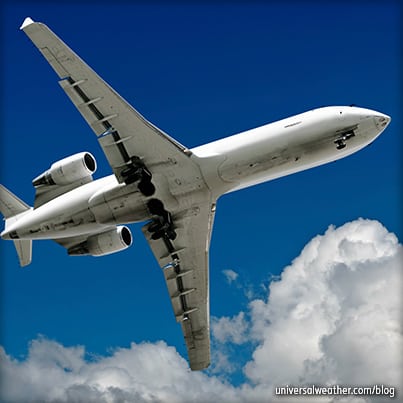Flight Planning Changes in China: Continued Progress


Traffic is up both to and within China, but for business aircraft operators there can be challenges when flight planning within this region. While we’re seeing progress in terms of higher-level routings and shorter-notice permit approvals, there are still many unknown and/or restricted airways and airports within China where information from the governing authority isn’t provided. When operating to China, on either domestic or international routings, it’s important to work with a well-experienced 3rd-party provider.
Here are some tips for navigating China’s current flight planning environment:
1. China is a metric flying environment
China and Mongolia still use the metric system, and there are currently no announced plans to change over to feet. Be aware that reduced vertical separation minimum (RVSM) certification and equipment are required for this region, or you will be limited to F/L 280 and below.
2. Know requirements with regard to usage of airways/fixes
While there are no restrictions to fixes (as long as the Civil Aviation Authority of China [CAAC] approves them), there are published routes (as well as unpublished routes) that are not possible to use. For example, published airway L888 is not available to general aviation(GA). Similarly, certain airways in China are restricted to domestic flights (by domestic operators) and only available by Air Traffic Control (ATC) approval.
You may encounter situations where CAAC approves a route going the opposite way on a one-way airway, but you must utilize what they provide. No aircraft traveling to China, other than those registered by Chinese authorities, are permitted to travel through Taiwan airspace. Be mindful that you cannot transition both airspaces if you are overflying either. Appropriate re-routes may be needed to avoid certain airspace.
In addition, you will not be permitted to fly over Tibet.
3. ATC is particular in ensuring how airways are utilized
When departing Shanghai eastbound, for example, you must reach a specific flight level in order to utilize the Fukuoka corridor. If you are unable to make this altitude threshold, in the 120 NM between Shanghai and the corridor, you will be limited to F/L 290 until reaching Japanese airspace. When flying between China and India, or between China and Pakistan, you must follow appropriate routings. Using the approved PURPA fix is an effective transition into Pakistan airspace, but it may add considerable flight time when operating to India. Also, there is a limited number of permitted fixes available when departing China toward the west. Keep in mind that direct routings are not permitted in China, and onboard navigators may be required for travel to certain domestic airports.
4. CAAC will often modify requested routings
Flight planning in China, when it pertains to routing, still has many restrictions, and CAAC will often revise your requested flight plan routing prior to a permit being issued. Always check the routing issued with the approved permit. At times, these routing changes will not be noted in the aeronautical information publication (AIP). These changes can involve both routings and flight information regions (FIRs), and you may not receive the entry or exit points you request. Such changes will alter your flight plan, and be aware that this can impact permits you already have for neighboring country airspace.
ATC will usually allow routing changes due to weather – particularly when a typhoon is active in the region.
5. Know the popular entry/exit points
For operations to and from China, the most used entry/exit points include AGAVO, INTIK, POLHO, SAIRN and LAMSO.
6. Operations to domestic-only airports may be restricted
When you operate to domestic-only airports in China, permit requests must first be approved by the CAAC. You’ll then need to arrange for a navigator via the CAAC. Your navigator will provide a flight plan on the day of operation, as well as airport information for your domestic destination. You will not have access to a flight plan in advance for planning purposes.
7. Be aware of assorted airport restrictions
The CAAC is very specific with regards to alternate airports, and it’s important to always stay updated on notices to airmen (NOTAMs). Be aware that alternate airports need to be airports of entry (AOE), while certain international and domestic airports do not permit tech stops.
8. Changes are taking place in terms of low flight authorization
Some sectors of low-level airspace have been opened within China, but those changes mostly impact small aircraft and helicopter operations. For more information, see the National Business Aviation Association’s (NBAA’s) article entitled, "China Accelerates Opening of Low-Level Airspace."
9. Additional Reading
- 9 Important Tips for Flight Planning into China
- 13 Things to Know About Overflight and Landing Permits in China
Conclusion
Best practice is to allow plenty of time to plan routing/schedule and permits for China. It’s best to stay with planned/approved schedule whenever possible. Schedule changes may take time to process, and last-minute changes may impact other permits that are in place for your intended route of flight.
Questions?
If you have any questions about this article, contact me at markmiller@univ-wea.com.



